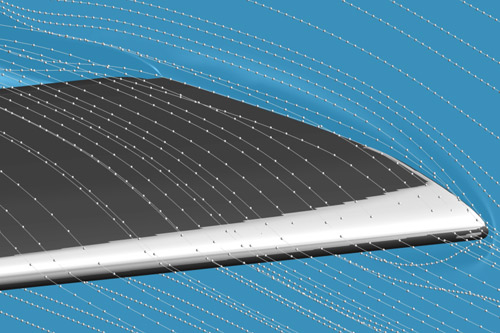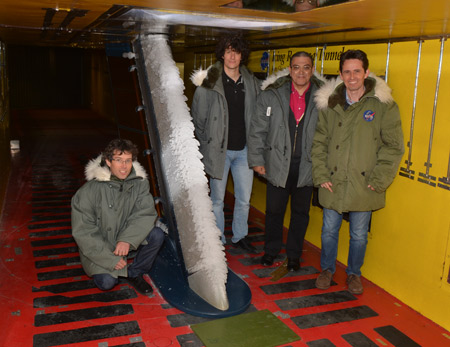DGAC continues to support ONERA in its research on understanding and modeling the physics of icing and its effects on the various components of an aircraft. An agreement was signed on December 14, 2015.
As a result of accidents and serious incidents in the 90s and 2000s, international regulations specifying the icing conditions under which an aircraft is able to fly have changed considerably. The Council for Civil Aeronautics Research (Conseil pour la Recherche Aéronautique Civile, CORAC) thus presented in 2012 to the DGAC icing guidelines intended to collectively develop the ability to better understand and model icing and to make that knowledge available particularly to certification bodies.
The quest for high-fidelity modeling of icing-related phenomena
A first agreement, PHYSICE (2012-2016), enabled ONERA to perform complex and original experiments aimed at advancing knowledge about the physics of icing. This work has led to new models that have been integrated into the calculations used by manufacturers in the aeronautical sector.

Numerical simulation of the formation of ice on the leading edge of a swept wing installed in a wind tunnel. The calculation requires the combined modeling of the air flow, the trajectories of water drops (represented by the white spheres) and the ice accretion on the surface.
In addition, it has resulted in numerous publications strengthening ONERA’s position as a scientific reference on icing internationally.
With this success, the new PHYSICE2 agreement (2015-2018), notified last December, is aimed at continuing this work on the modeling of the basic physical phenomena related to aircraft icing in flight.
PHYSICE2 will particularly relate to:
- Modeling ice roughness
- The effect of this roughness on friction and wall heat transfers
- The impact and deposition of water drops encountered under severe icing conditions (SLD - Supercooled Large Droplets, measuring 50 to 500 micrometers), considered in the new international regulations.
A wind tunnel for icing in Toulouse
In order to give France an experimental resource for icing research offering capabilities that are unique in Europe, the agreement includes funding for the specification and design of a test facility dedicated to the study of icing phenomena. This specific wind tunnel will be installed at the ONERA center in Toulouse. The agreement stipulates that its construction will be financed through ONERA’s investment loans.

ONERA’s icing team with the swept wing segment model in NASA Glenn Research Center’s
Icing Research Tunnel




